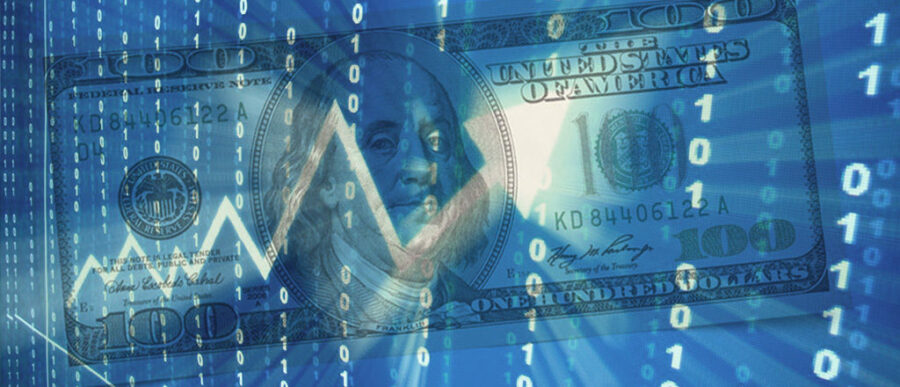Analyst expectations of firms’ earnings are on average biased upwards, and that bias varies over time and stocks, according to new research by experts at Wharton and elsewhere. They have developed a machine-learning model to generate “a statistically optimal and unbiased benchmark” for earnings expectations, which is detailed in a new paper titled, “Man vs. Machine Learning: The Term Structure of Earnings Expectations and Conditional Biases.” According to the paper, the model has the potential to deliver profitable trading strategies: to buy low and sell high. When analyst expectations are too pessimistic, investors should buy the stock. When analyst expectations are excessively optimistic, investors can sell their holdings or short stocks as price declines are forecasted.
“[With the machine-learning model], we can predict how the prices of the stocks will behave based on whether or not the analyst forecast is too optimistic or too pessimistic,” said Wharton finance professor Jules H. van Binsbergen, who is one of the paper’s authors. His co-authors are Xiao Han, a doctoral student at the University of Edinburgh Business School; and Alejandro Lopez-Lira, a finance professor at the BI Norwegian Business School.
The researchers found that the biases of analysts increase “in the forecast horizon,” or in the period when the earnings announcement date is not anytime soon. However, on average, analysts revise their expectations downwards as the date of the earnings announcement approaches. “These revisions induce negative cross-sectional stock predictability,” the researchers write, explaining that “stocks with more optimistic expectations earn lower subsequent returns.” At the same time, corporate managers have more information about their own firms than investors have, and can use that informational advantage by issuing fresh stock, Binsbergen and his co-authors note.
The Opportunity to Profit
Comparing analysts’ earnings expectations with the benchmarks provided by the machine-learning algorithm reveals the degree of analysts’ biases, and the window of opportunity it opens. Binsbergen explained how investors could profit from their machine-learning model. “With our machine-learning model, we can measure the mistakes that the analysts are making by taking the difference between what they’re forecasting and what our machine-learning forecast estimates,” he said.
“We can measure the mistakes that the analysts are making by taking the difference between what they’re forecasting and what our machine-learning forecast estimates.” –Jules H. van Binsbergen
Using that arbitrage opportunity, investors could short-sell stocks for which analysts are overly optimistic, and book their profits when the prices come down to realistic levels as the earnings announcement date approaches, said Binsbergen. Similarly, they could buy stocks for which analysts are overly pessimistic, and sell them for a profit when their prices rise to levels that correspond with earnings that turn out to be higher than forecasted, he added.
Binsbergen identified two main findings of the latest research. One is how optimistic analysts are substantially over time. “Sometimes the bias is higher, and sometimes it is lower. That holds for the aggregate, but also for individual stocks,” he said. “With our method, you can track over time the stocks for which analysts are too optimistic or too pessimistic.” That said, there are more stocks for which analysts are optimistic than they’re pessimistic, he added.
The second finding of the study is that “there is quite a lot of difference between stocks in how biased the analysts are,” said Binsbergen. “So, it’s not that we’re just making one aggregate statement, that on average for all stocks the analysts are too optimistic.”
Capital-raising Window for Corporations
Corporations, too, could use the machine-learning algorithm’s measure for analysts’ biases. “If you are a manager of a firm who is aware of those biases, then in fact you can benefit from that,” said Binsbergen. “If the price is high, you can issue stocks and raise money.” Conversely, if analysts’ negative biases push down the price of a stock, they serve as a signal for the firm to avoid issuing fresh stock at that time.
When analysts’ biases lift or depress a stock’s price, it implies that the markets “seem to be buying the analysts’ forecasts and were not correcting them for over-optimism or over-pessimism yet,” Binsbergen said. With the machine-learning model that he and his researchers have developed, “you can have a profitable investment strategy,” he added. “That also means that the managers of the firms whose stock prices are overpriced can issue stocks. When the stock is underpriced they can either buy back stocks, or at least refrain from issuing stocks.”
For their study, the researchers used information from firms’ balance sheets, macroeconomic variables, and analysts’ predictions. They constructed forecasts for annual earnings that are a year and two years ahead for annual earnings; similarly, they used forecasts that were one, two and three quarters ahead for quarterly earnings. With the benchmark expectation provided by their machine-learning algorithm, they then calculated the bias in expectations as the difference between the analysts’ forecasts and the machine-learning forecasts.



